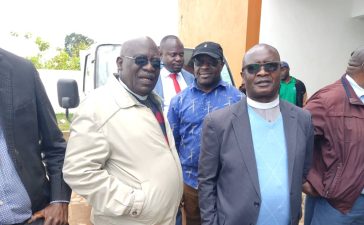The sudden tragic death of Vice President Chilima marked the second unexpected death within the presidency of Malawi. The first was President Bingu, who also died suddenly in April 2012. Both Chilima and Bingu died while serving their second terms in the presidency, and they both died in the morning towards noon. In both instances, there was significant uncertainty and speculation surrounding their conditions, and their deaths were only officially confirmed the following day after they had died.
The similarities of these tragedies, especially in the manner they occurred and conduct of government officials, suggest to me that though 12 years have elapsed since Bingu, Malawi has not made any progress in terms of risk and crisis management and our state of preparedness to manage emergencies that involve our president and vice president has not improved.
The MCP administration has been taking risks of flying both, our president and vice president in an old Donnier without crucial equipment, technologies and procedures that would enhance flight safety and efficient emergency responses. And the inefficiencies of government bureaucracy and lack of capacity and resources led to a very flawed search and rescue mission during the fateful hours of the Chikangawa plane crash. However, DPP administration was worse between 2004 and 2012.
Firstly, would you believe that during the DPP administration, for the entire first term, the president did not have a personal doctor and not even a medical emergency kit and yet he was over 70years old with hypertension and diabetes? It was only in 2009, during his second term that the administration eventually hired Dr. Namalika as the president’s personal physician, and Bingu used his own personal money to buy a medical emergency kit in Germany.
Secondly, would you believe that from 2011, the DPP administration maintained Dr. Namalika when he was incapable of administering crucial emergency procedures in the event that the president needed emergency help? He had been involved in a car accident which injured his hands and he could not effectively discharge his duties. His incapacitation is what mainly killed the president.
You see, when Bingu collapsed at State House around 11:10AM, he did not die right away. When his physician was fetched, he found the president alive but breathing with difficulties. Unbelievably, the physician came to attend to the president without the medical emergency kit because he left it at his house. So, he just left the president lying there and went to fetch the kit. The President died about 20 minutes later in the back of a car on the way to KCH as his doctor failed to perform crucial medical procedures like ABC, intubating and putting the IV line because of his injured arms.
But even if he had managed to reach KCH alive, Bingu could still not have survived because the hospital did not have the required medicine for his condition, and KCH was also not prepared to handle his emergency. All 10 switchboard emergency numbers of the hospital were out of service when Dr. Namalika called the hospital to prepare them for the president’s emergency.
Thirdly, APM took charge of the president’s death situation at KCH and at KIA. But he miserably failed to plan and execute an effective crisis management plan. At KCH, APM was so confused that after the doctors informed him that they had done CPR for 1 hour and Bingu had died, he forced them to continue with CPR for 2 more hours until they broke Bingu’s ribs and the body began bleeding from the nose and mouth.
They installed machines to the body to disguise the death, stopped nurses from entering the correct information of death and created a fake name of Daniel Phiri to sneak the dead body out of Malawi to South Africa for political expediency. At KIA, APM battled so hard with the air ambulance pilots and doctors who were refusing to fly Bingu’s body to South Africa because they had no clearance to fly a corpse having been lied to that they were coming to collect a sick person.
When Joyce Banda became President, she weaponized the death of Bingu, and arrested APM for his conduct during the death crisis. APM and his fellow DPP officials, including Patricia Kaliati – now SG of UTM who held a press briefing at midnight lying to Malawians that Bingu was alive in South Africa were all charged with treasonous conduct.
My point is that DPP does not have the moral obligation to weaponize Chilima’s death and blame MCP for a flawed search and resecure mission during the plane crash crisis. DPP was more careless with health and safety of the presidency, and their conduct during the medical emergency and death crisis of Bingu was worse than we have experienced during the Chikangawa crisis.
Both, Bingu’s and Chilima’s deaths were avoidable if the DPP and MCP administrations did not take unnecessary risks with lives of occupants of the presidency offices. All political parties in Parliament must fight to improve on government’s risk and crisis management procedures and investment more in accidents and medical emergency response services of our country for all citizens.
The opinion contained in this article are not necessarily those of Shire Times, but that of the author, Lyson Sibande.












